If you visit Hiroshima, there are two major free things to do in Hiroshima you should not miss out on. Of all the unique things you should see here, you should visit Hiroshima Peace Memorial Park, all of which is free if you do not go inside the Hiroshima Peace Memorial Museum (which has an entrance fee). You can also enjoy the views of Hiroshima Castle for free. You can even easily do both in the same day – here’s a peek at what you might see from my visit in late November 2018.


Hiroshima Castle

You’ll notice that the castle is surrounded by a moat – there used to be three moats but the outer two were filled leaving only this one. Here’s an initial view from my hotel room where you can see the entire moat that is left and the castle can be sorta scene in the upper left (the Hiroshima Museum of Art is the round building you see in the forefront that was directly across my hotel).

And here’s a look after I crossed the street after the art museum.


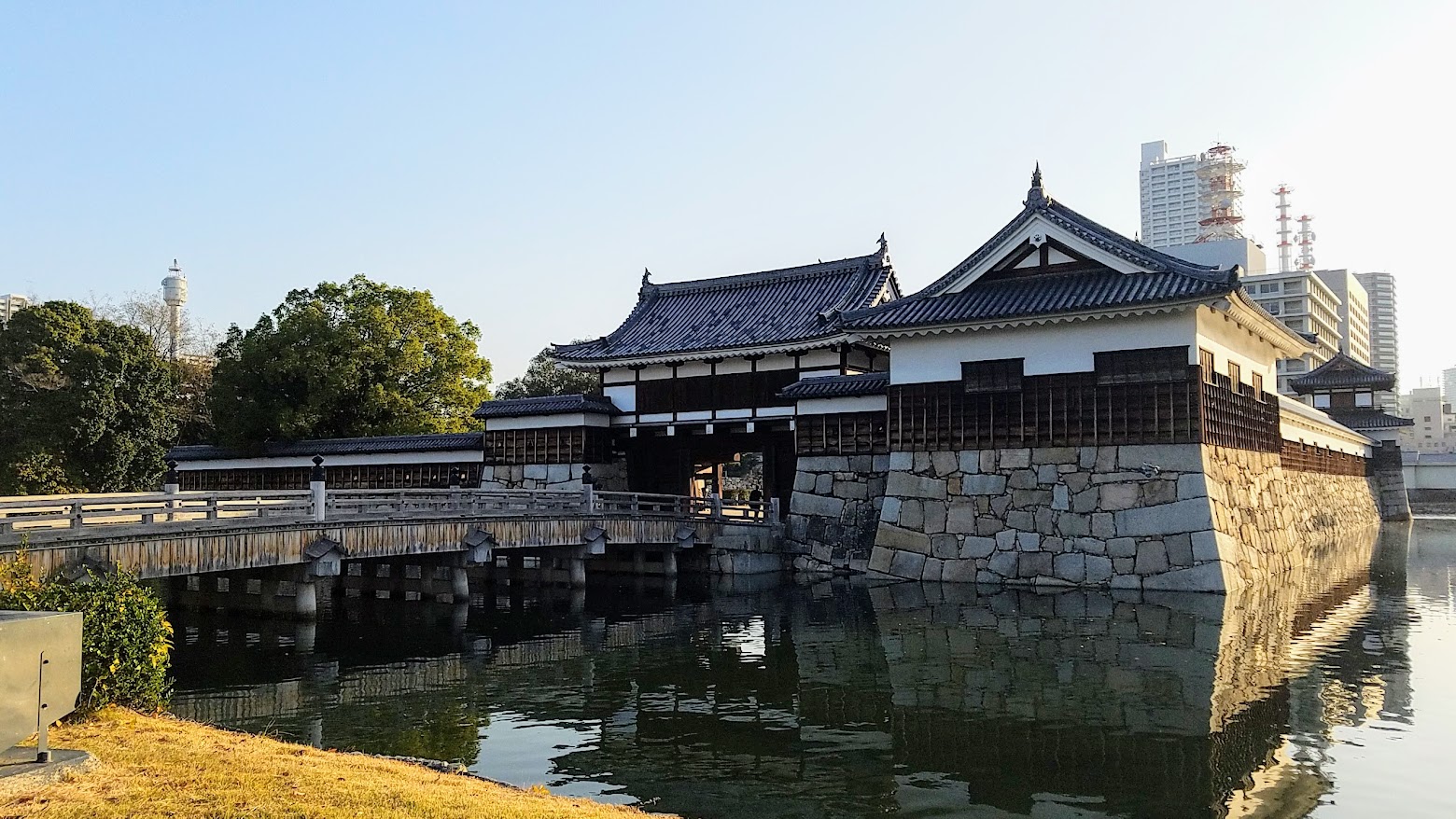

Although there is a small admission fee to enter, I opted to only enjoy the views from the outside, having already visited Himeji Castle on a previous trip to Japan. I visited in late November, and there were still some great autumn colors on some of the trees.


Unfortunately the original Hiroshima Castle was destroyed by atomic bomb but the exterior of the castle was renovated in 1958 and then the inside restored in 1989 so the castle is a replica. But, it is still worth seeing. The main keep itself is five stories tall and a mixture of stone, concrete, and wood.


There is also a small shrine on the grounds – I didn’t stop to visit though. From Hiroshima Castle, it is only a 15 minute walk from here to Peace Memorial Park.
Peace Memorial Park
Hiroshima Peace Memorial Park is a free park in the center of Hiroshima with various areas that serve as art and memorials dedicated to memories of the history and victims of the atomic bomb detonated here on 8:15 AM on August 6th 1945. The park is open 24 hours to the public and is free (it is lit in the evenings).
Before the bomb, this area was the downtown commercial heart of Hiroshima – and after the bomb, rather then redevelop it the city made it a memorial to urge remembering what happened that day and after that day, and to urge for peace and never repeating that day anywhere, anytime.
Atomic Bomb Dome




The most noticeable and striking memorial to the effect of the nuclear bomb you will see will be the Hiroshima Prefectural Industry Promotion Building, known as the Atomic Bomb Dome. The Atomic Bomb Dome was located almost directly underneath where the bomb detonated, which caused 35 tons of pressure per square meter and wind speed of 440 meters per second from the explosion.



Although the people inside died instantly and the interior was incinerated, the walls and the steel dome remain and still stand today.




I am cheating a little by showing you the photo now, these were taken from the Hiroshima Peace Memorial Museum exhibit, but I think it helps establish a before and after understanding of what the building looked like.



If you walk slight south of the Atomic Bomb Dome is Aioi Bridge, which you should cross and look back on the Atomic Bomb Dome. Supposedly this easy to spot and locate bridge was used for targeting the atomic bomb. The atomic bomb exploded at a height of 600 meters, 160 meters to the southeast of the Atomic Bomb Dome, aka essentially over this bridge. When the bomb detonated, the crowds of people who were either on, or around the bridge were killed instantly. In the photo below, I am standing on the bridge and looking towards the Atomic Bomb Dome.

Peace Bell
This bell is cast with a world map without national borders on the surface of the bell to symbolize a single, unified world. Everyone is free to ring the bell to let it be heard the desire for nuclear arms and wars to be gone and all nations live in peace.



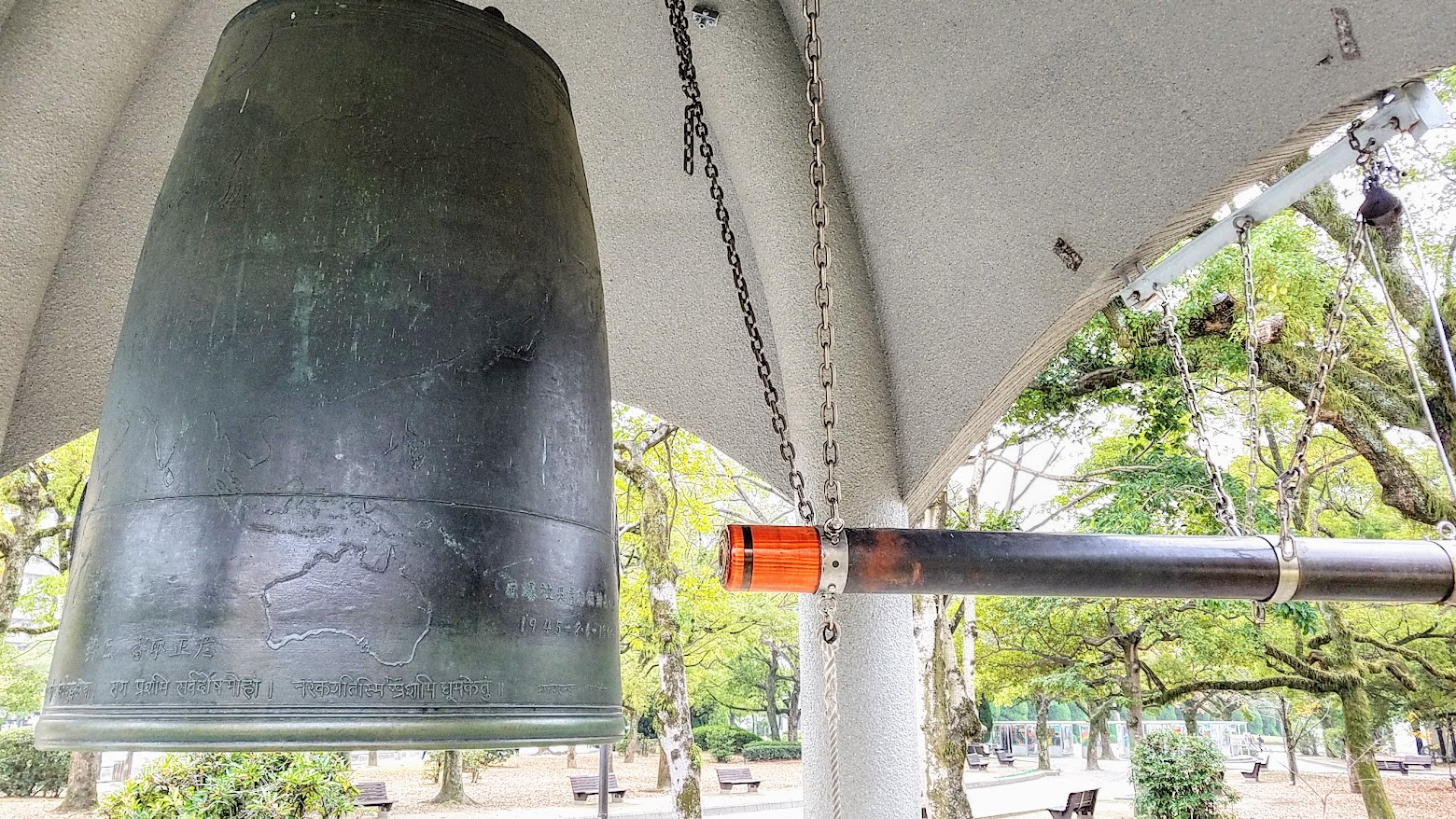
Children’s Peace Monument

The Children’s Peace Monument is a call for peace and reminder of Sadako Sasaki and the thousands of other children who died due to the atomic bomb. You may remember the story of Sadako Sasaki, who was exposed to the radiation at age 2 and seemed to be a survivor, but 10 years later developed leukemia and died at the age of 12. After falling ill, she famously began folding paper cranes based on a tale that if you fold 1000 paper cranes a wish would be granted. She folded paper cranes throughout her 8 month struggle with leukemia, when she passed she had folded more then 1300 cranes.
You can see the cranes commemorated here inside the bell inside the monument, at the top of the monument with the little girl holding the outline of a paper crane.




Anyone in the world can send paper cranes to the monument and you can see many on display here.

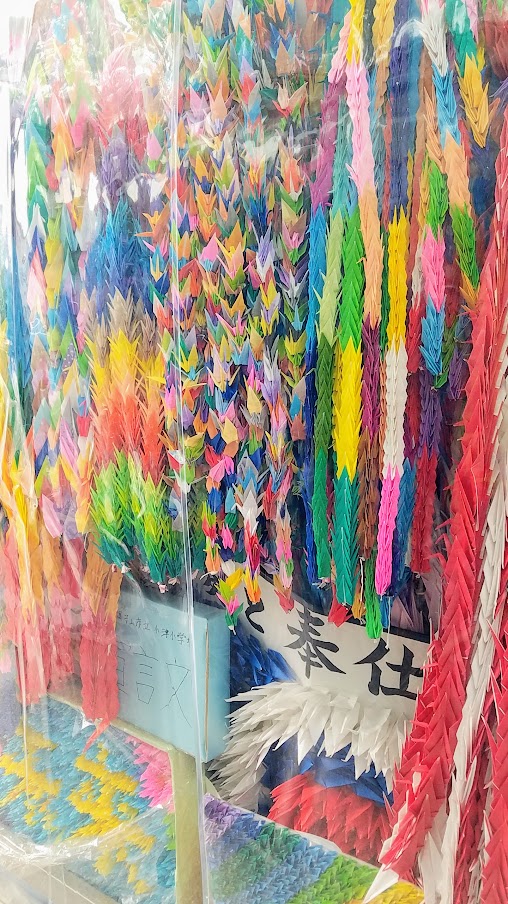

Flame of Peace
It’s a little hard to see, but there is a flame burning in the middle of that sculpture over water that vaguely looks like two palms facing up towards the sky. The flame has burned continuously since it was lit in 1964, and will burn until there are no more nuclear bombs.


Cenotaph for Atomic Bomb Victims

At the Cenotaph for Atomic Bomb Victims you will often find people paying their respects and offerings left in remembrance of the atomic bomb victims at this arch that almost looks like a shelter.

The names of all those who lost their lives are inscribed inside the central stone vault though every year, new names are still being added to the mroe then 220,000 there as more victims who died and were affected by the bomg are identified.
Phoenix Trees
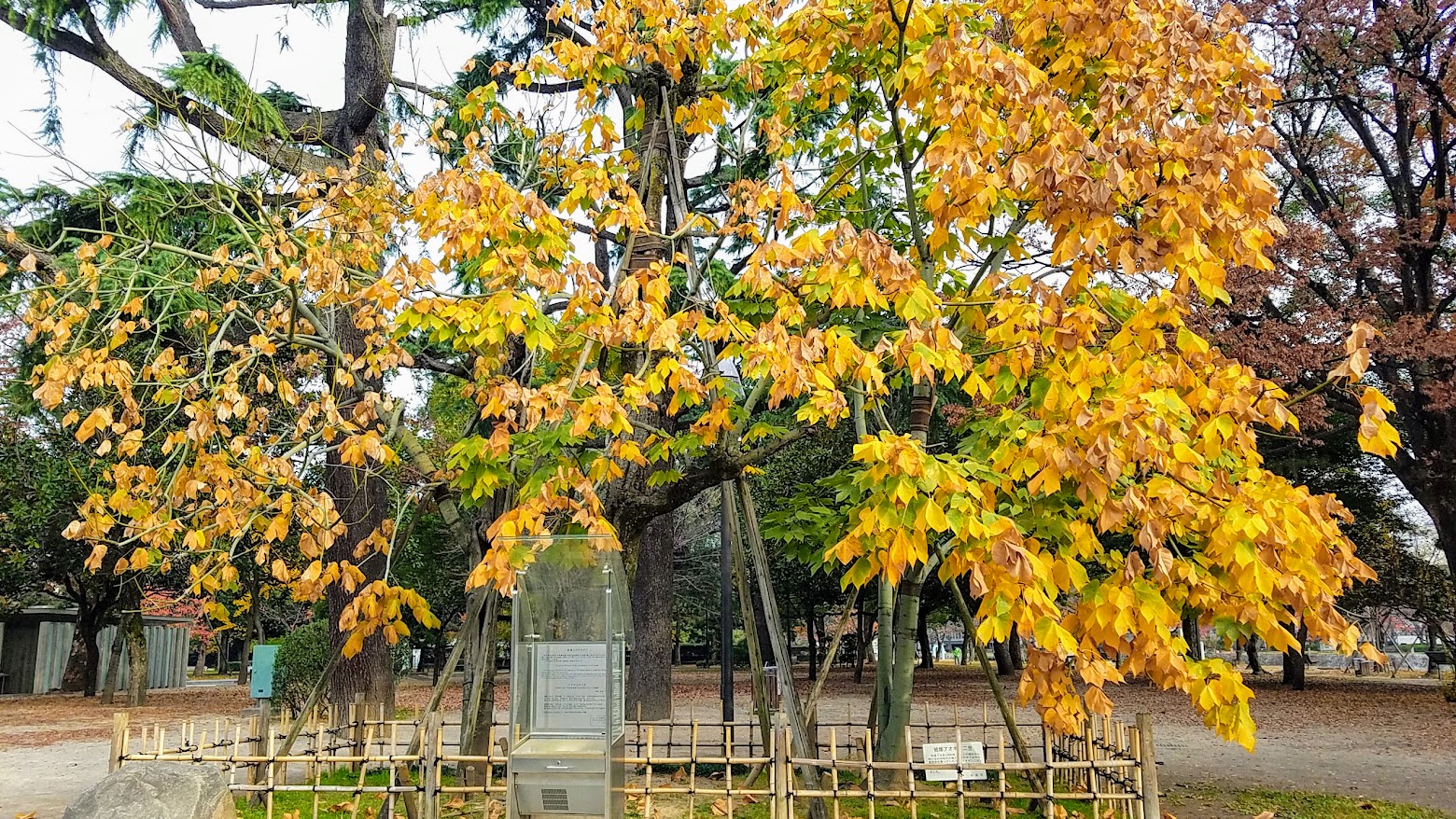
The Phoenix Trees withstood the atomic bombing even though they were 1300 meters from the hypocenter. Although half a center towards the hypocenter side is burnt to a hollow, the tree is still growing together and was transplanted to near the Hiroshima Peace Memorial Museum in May 1973. Seeds from the tree are distributed and grown across Japan and the rest of the world to promote peace.
Hiroshima Peace Memorial Museum


A watch stopped at 8:15, the time the bomb was dropped
Although the Hiroshima Peace Memorial Museum is not free, the small fee (200 yen) is so very small that I think the less then $2 fee is practically free, and so well worth it. However, the museum is probably better oriented towards those who are willing to read and think about the history and personal stories, young children may get bored or very upset. Even adults may get upset. Some material can also be disturbing, as the museum displays possessions from the victims of the bomb, and photographs and other documentation does not shy away from showing injuries and emotional pain of families being torn apart, searching for each other, and even if lucky enough to find each other watching often death inevitably catch up.

A person sitting on the steps of a bank waiting for it to open – 260 m from the hypocenter of the atomic bomb detonation. The surface of the surrounding stone was flashed white from the intense heat ray, but there is a shadowed area where that person was sitting who likely died on the spot. It is unknown who the individual was.

Shin, shown to the right of his older sister, 3 years and 11 months old, and he loved to ride his tricycle. He was riding it that morning – 1,500 meters from the hypocenter. He and the tricycle were badly burned, and he died that evening.
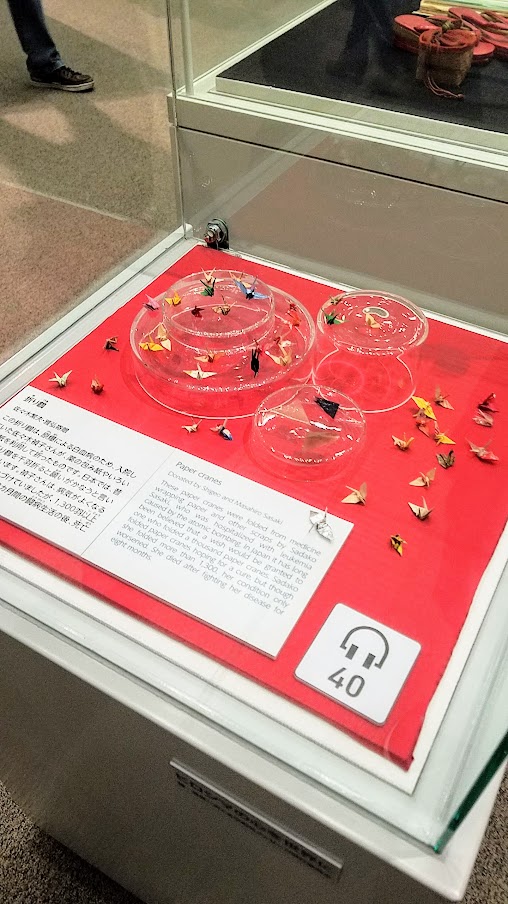
The cranes folded by Sadako Sasaki shown here were folded from medicine wrapping paper and were much smaller then I had imagined.
On one floor, there are multiple booth areas that have no doors but have seating and a video screen where you can watch various recordings to hear the stories from various victims and survivors of that day.

The Hiroshima Peace Memorial Museum and the park overall is a completely unique attraction that if I had to choose among must sees, would definitely list the museum. It is a very small cost to enter the museum and you will definitely feel something at the end of your experience. It is very rare to think about history and war in terms of human stories instead of facts. That said, it is very possible to after this heavier experience to do something else – in the same day I visited the museum I also visited Miyajima, the famous island witwith the Torii gates in the ocean. I’ll cover Miyajima in my next Travel post.











I really enjoyed this post. I think there should be more posts focused on free things to do in a city. Japan is high on my list and I have heard spring and fall are the best times to visit. All of the memorials must have been very difficult to observe but I like the fact the Peace Museum focus on human stories. I will definitely check this out on my visit. Thank you for sharing.
Thank you for visiting I agree there should be an updated list of free things to do in every city because that stuff adds up you know $$$!!
I love that about the paper cranes! Thanks for this comprehensive list. Will keep this handy for when I visit! Thanks!
It was so surprising how teeny-tiny these paper cranes are in real life
Wow. What an experience to see these things in person. I love the fact the castle had not one but THREE motes originally! And what a beautiful building. So glad they were able to rebuild it to its original state (but with only 1 mote! teehee).
And the paper cranes—-so touching and sobering. History-it is to be respected and remembered. Thank you for sharing these monuments. I hope some day I will get to visit this beautiful place.
I hope you have a chance to visit one day too- Hiroshima is easy to get to from Tokyo and Kyoto if you’re ever in the country
What a great list of free things to do in Hiroshima! The sights are stunning and I love hearing the story behind them too.
Thanks, I was happy to share while I still sorta remembered fresh from the trip lol
The architecture of the castle is so cool and different from western style. The peace park and museum would be so emotional to see in person.
Yea, it was emotional in a educational way!